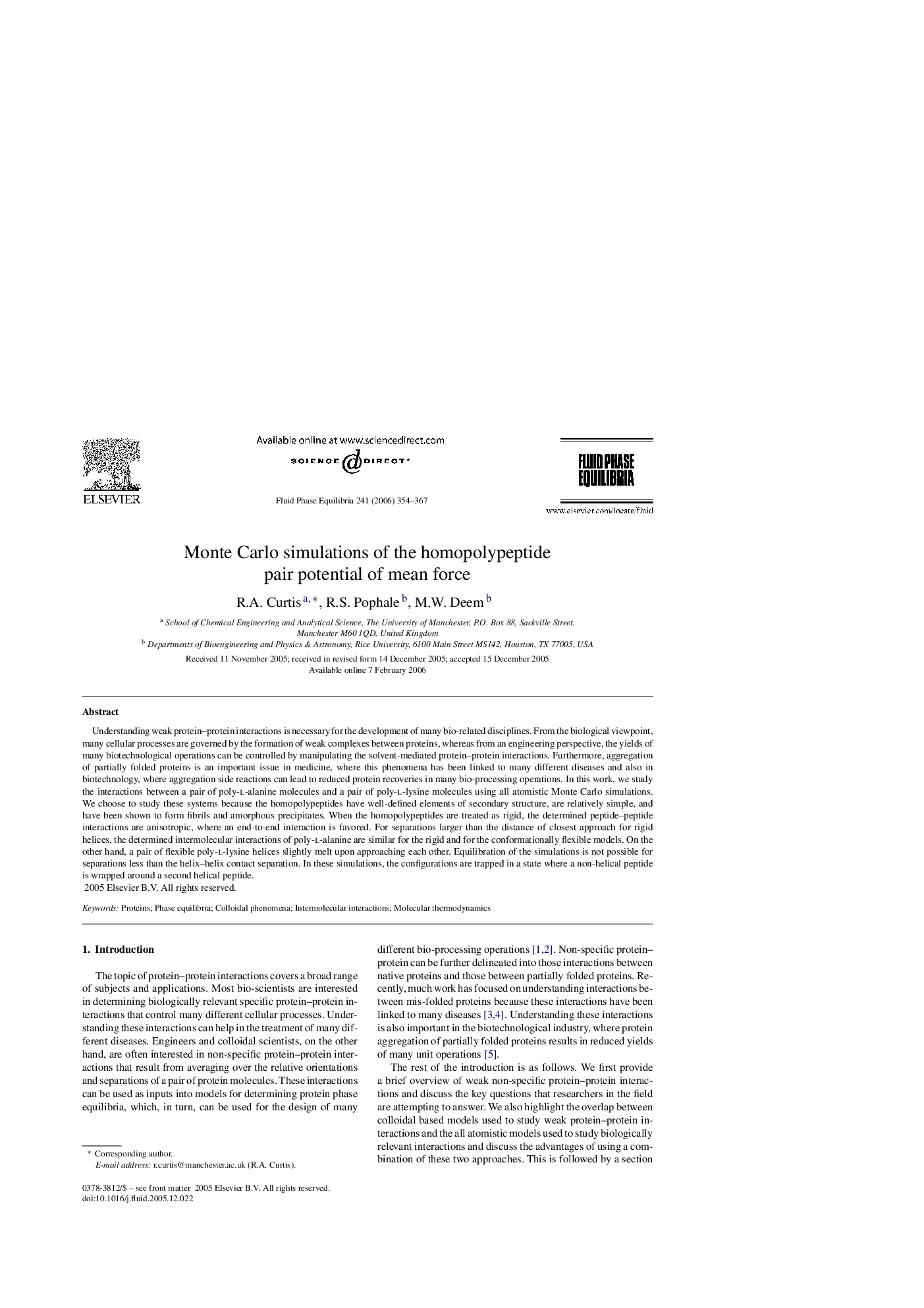| کد مقاله | کد نشریه | سال انتشار | مقاله انگلیسی | نسخه تمام متن |
|---|---|---|---|---|
| 204833 | 460806 | 2006 | 14 صفحه PDF | دانلود رایگان |

Understanding weak protein–protein interactions is necessary for the development of many bio-related disciplines. From the biological viewpoint, many cellular processes are governed by the formation of weak complexes between proteins, whereas from an engineering perspective, the yields of many biotechnological operations can be controlled by manipulating the solvent-mediated protein–protein interactions. Furthermore, aggregation of partially folded proteins is an important issue in medicine, where this phenomena has been linked to many different diseases and also in biotechnology, where aggregation side reactions can lead to reduced protein recoveries in many bio-processing operations. In this work, we study the interactions between a pair of poly-l-alanine molecules and a pair of poly-l-lysine molecules using all atomistic Monte Carlo simulations. We choose to study these systems because the homopolypeptides have well-defined elements of secondary structure, are relatively simple, and have been shown to form fibrils and amorphous precipitates. When the homopolypeptides are treated as rigid, the determined peptide–peptide interactions are anisotropic, where an end-to-end interaction is favored. For separations larger than the distance of closest approach for rigid helices, the determined intermolecular interactions of poly-l-alanine are similar for the rigid and for the conformationally flexible models. On the other hand, a pair of flexible poly-l-lysine helices slightly melt upon approaching each other. Equilibration of the simulations is not possible for separations less than the helix–helix contact separation. In these simulations, the configurations are trapped in a state where a non-helical peptide is wrapped around a second helical peptide.
Journal: Fluid Phase Equilibria - Volume 241, Issues 1–2, 15 March 2006, Pages 354–367